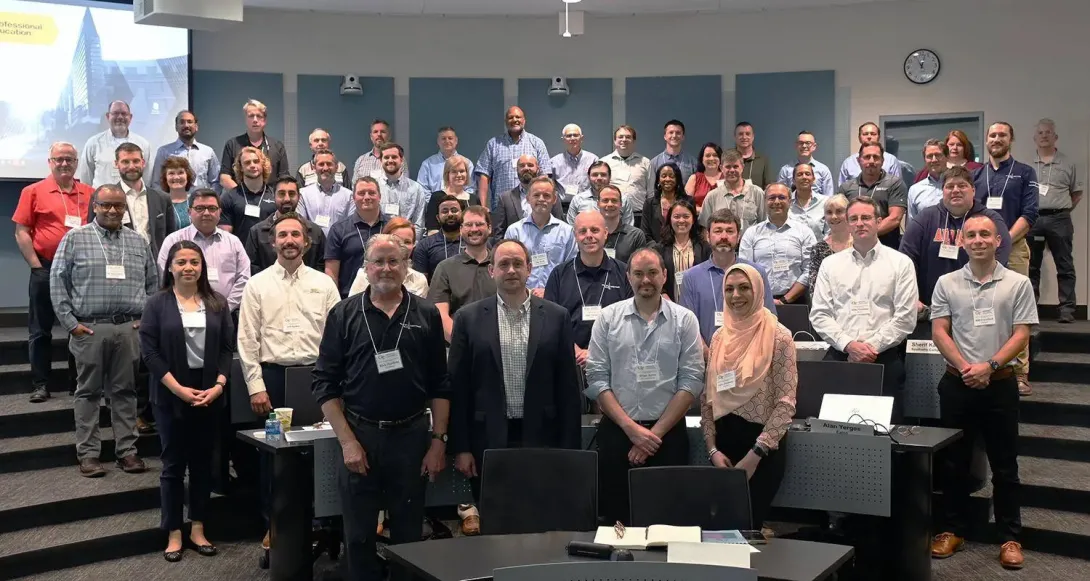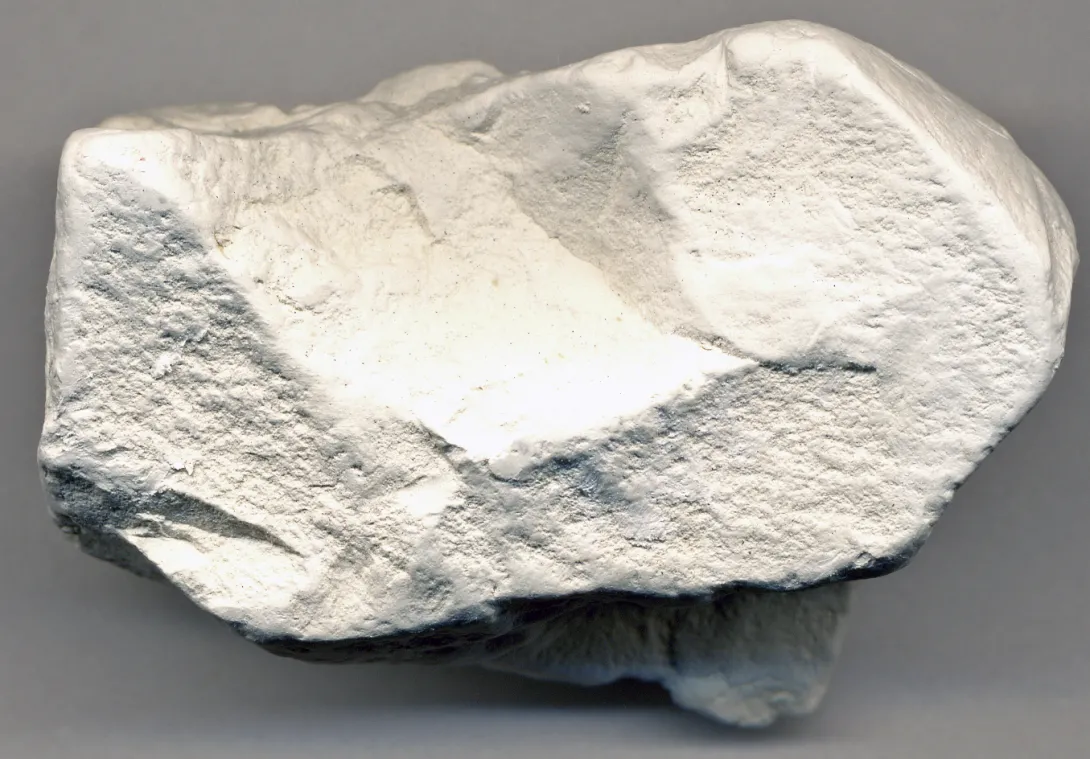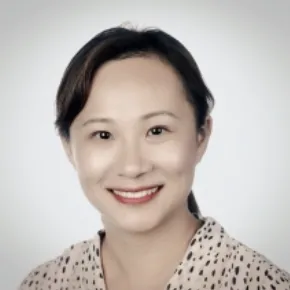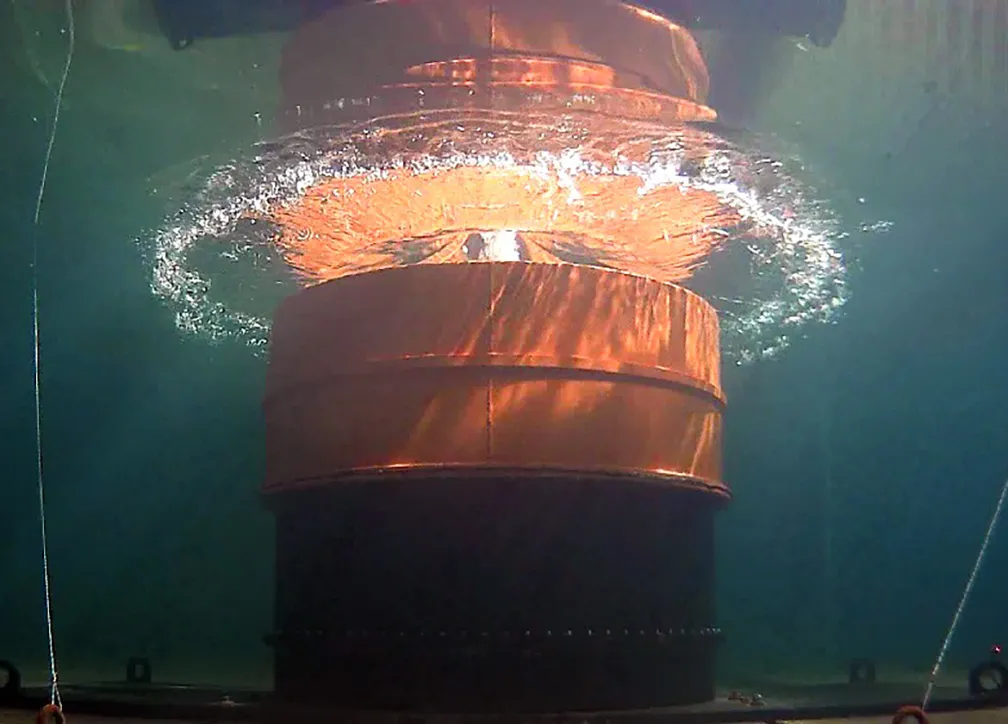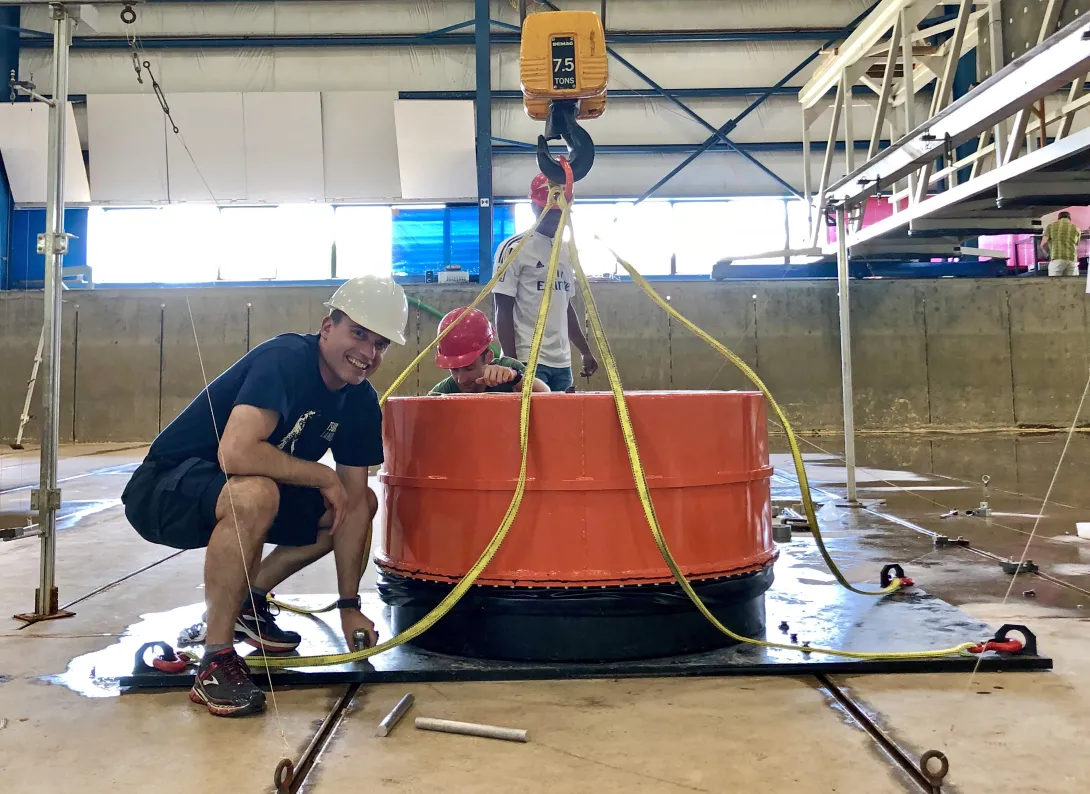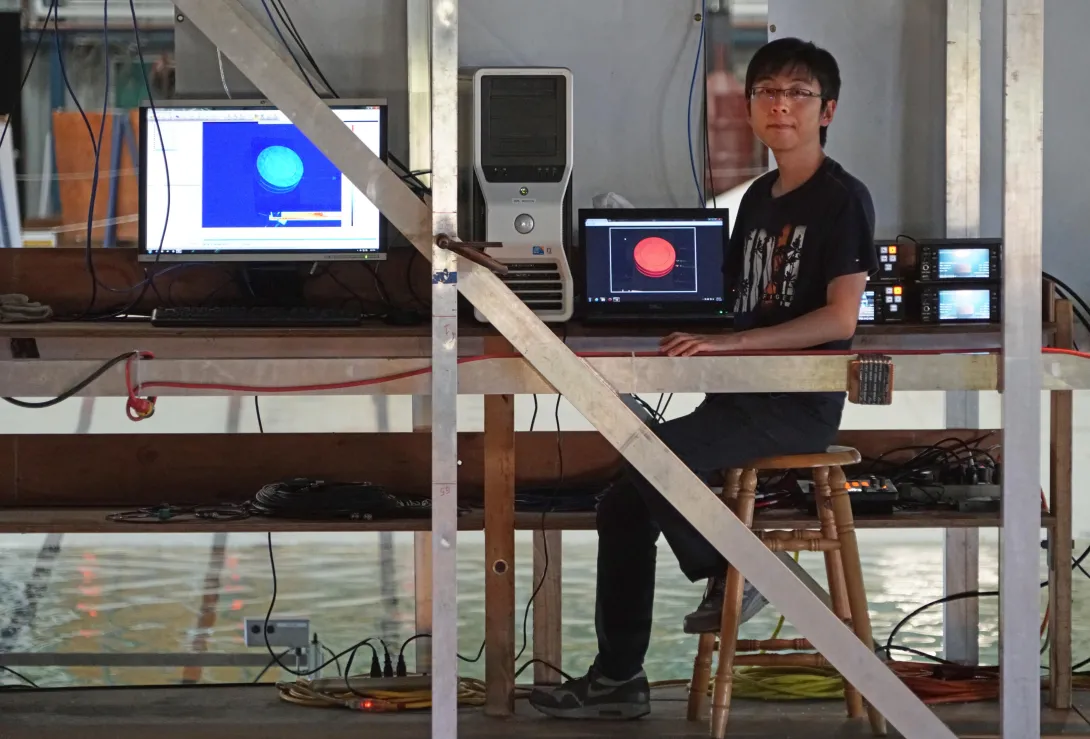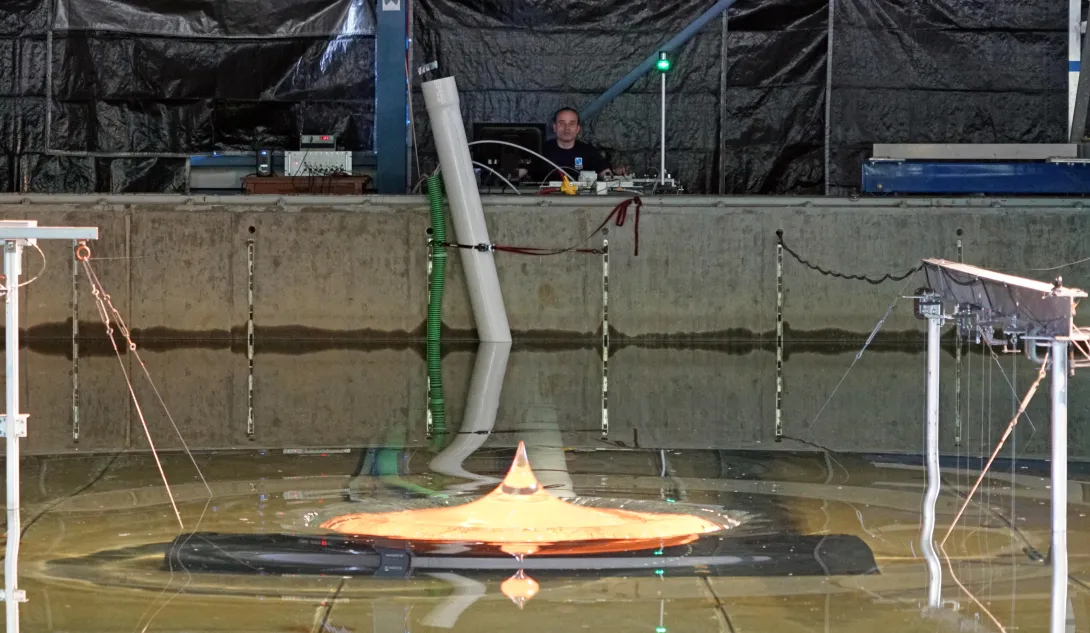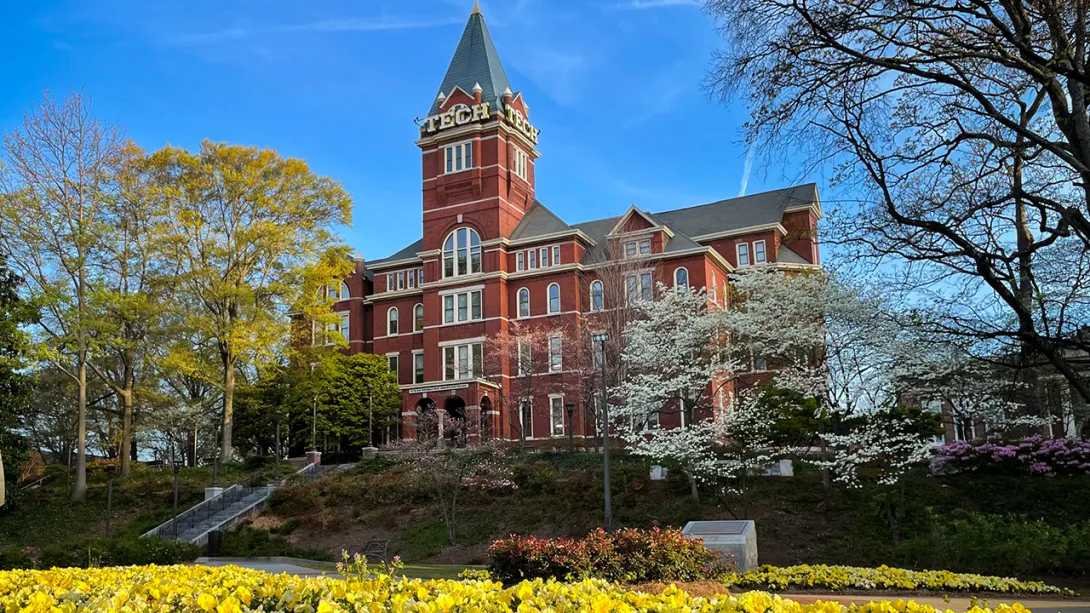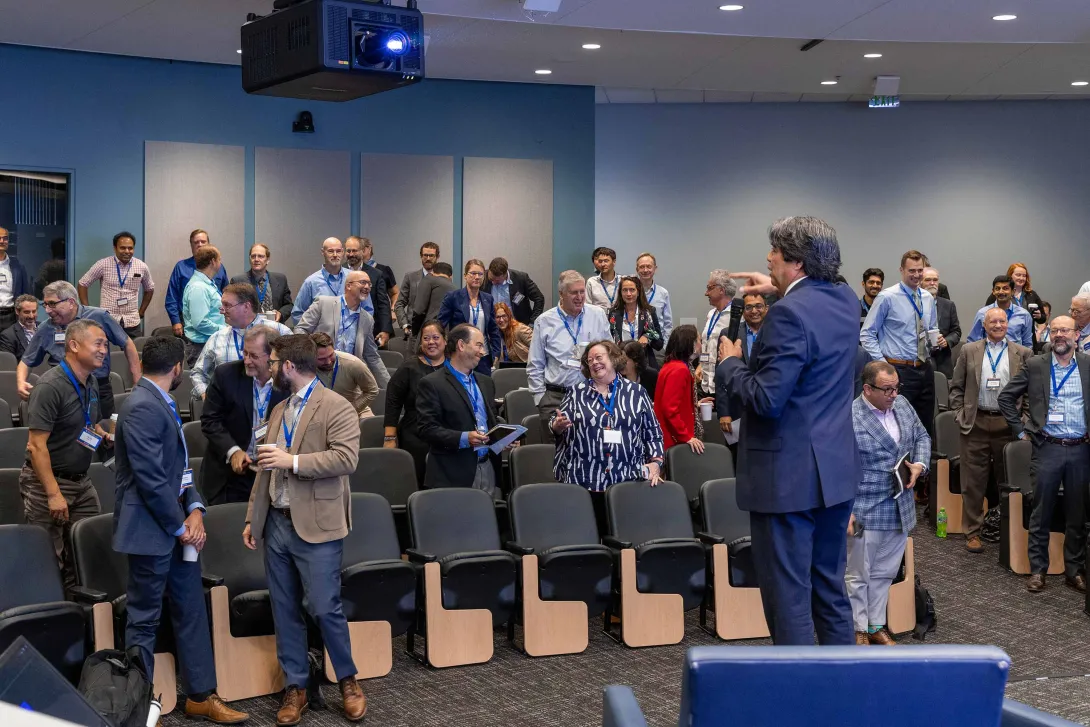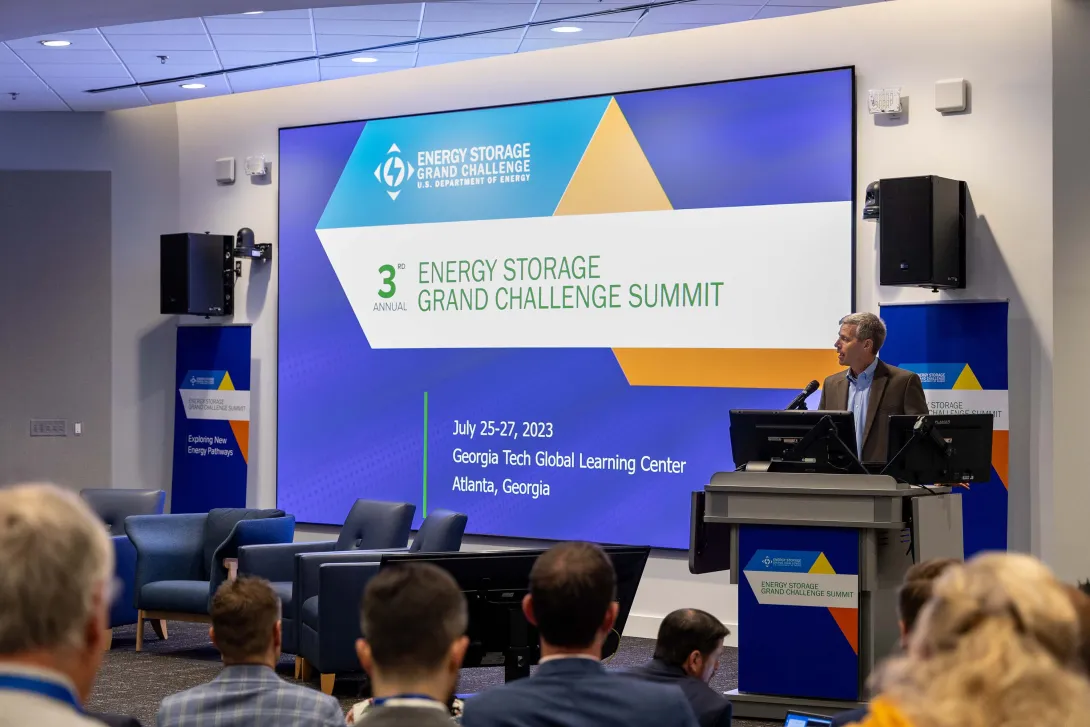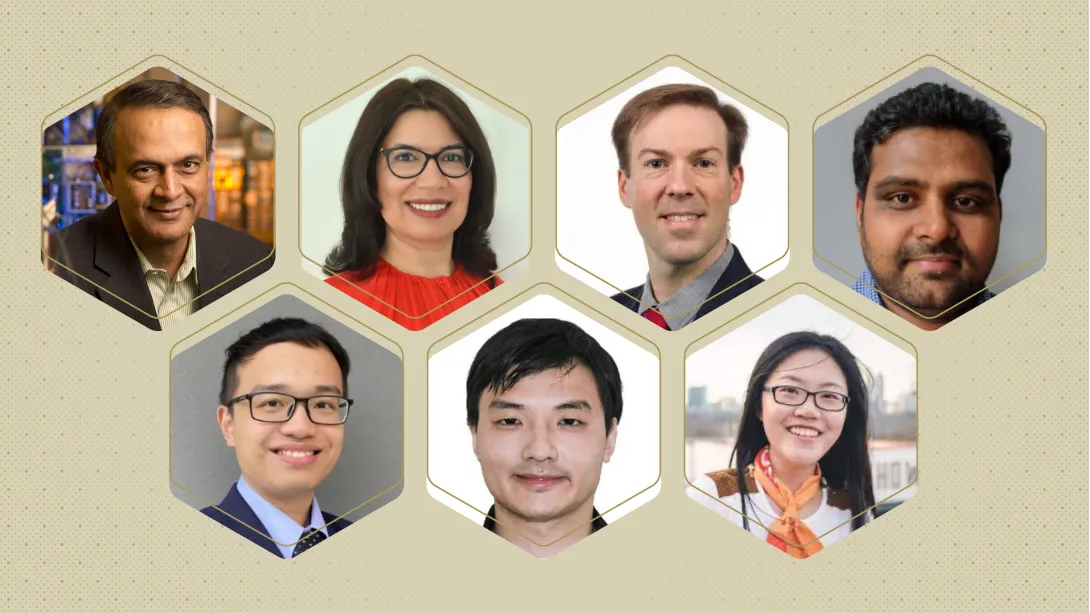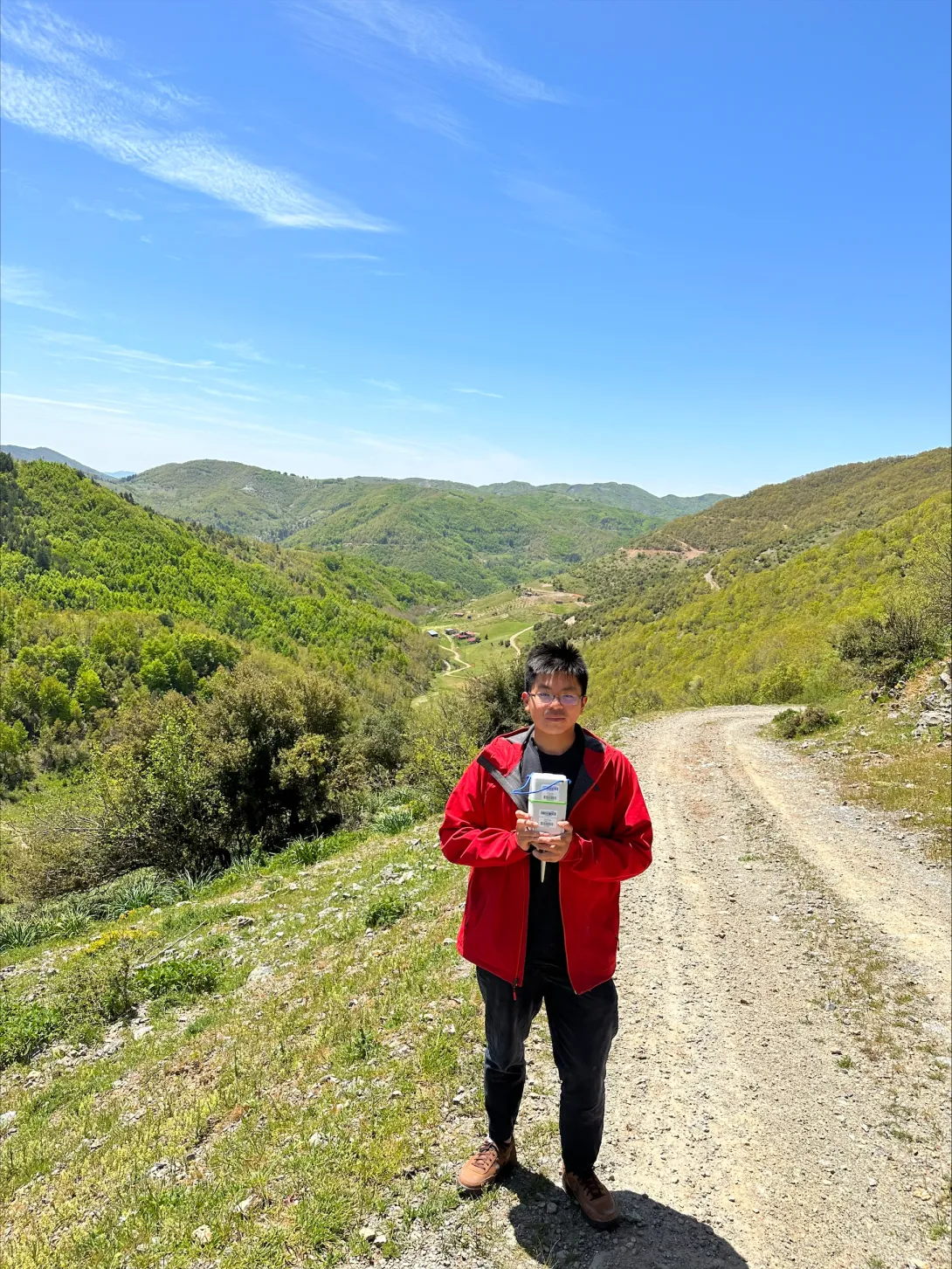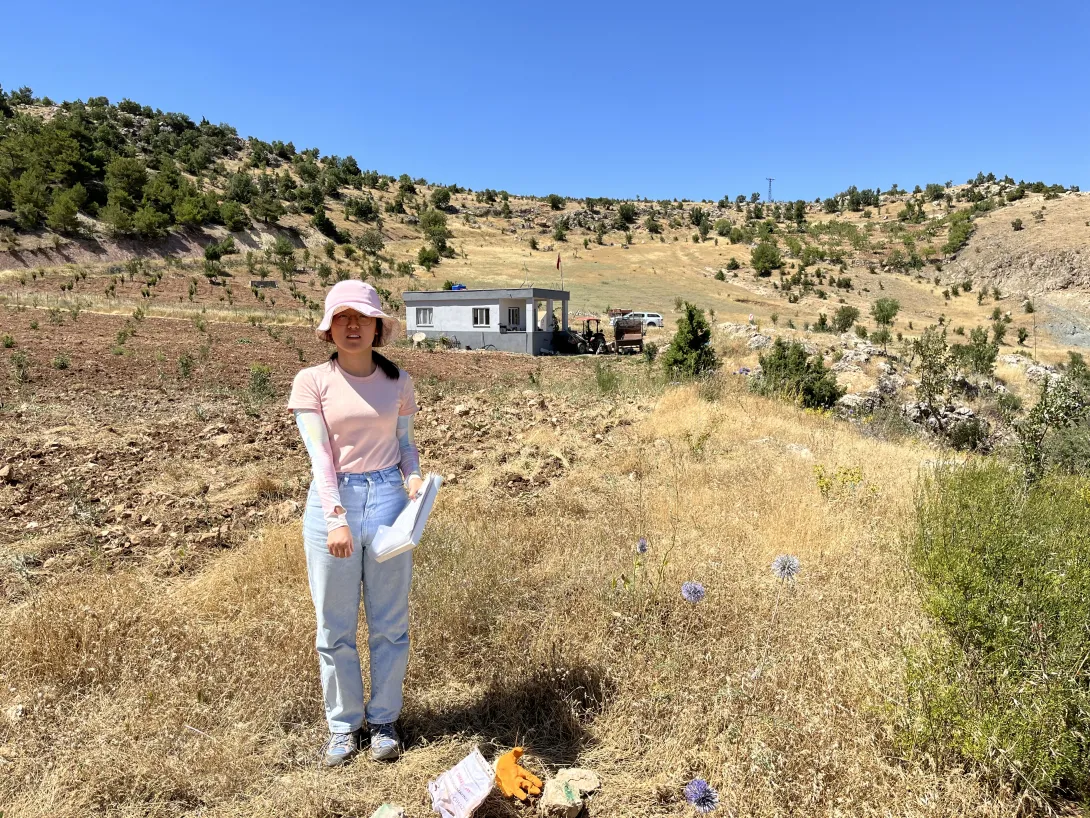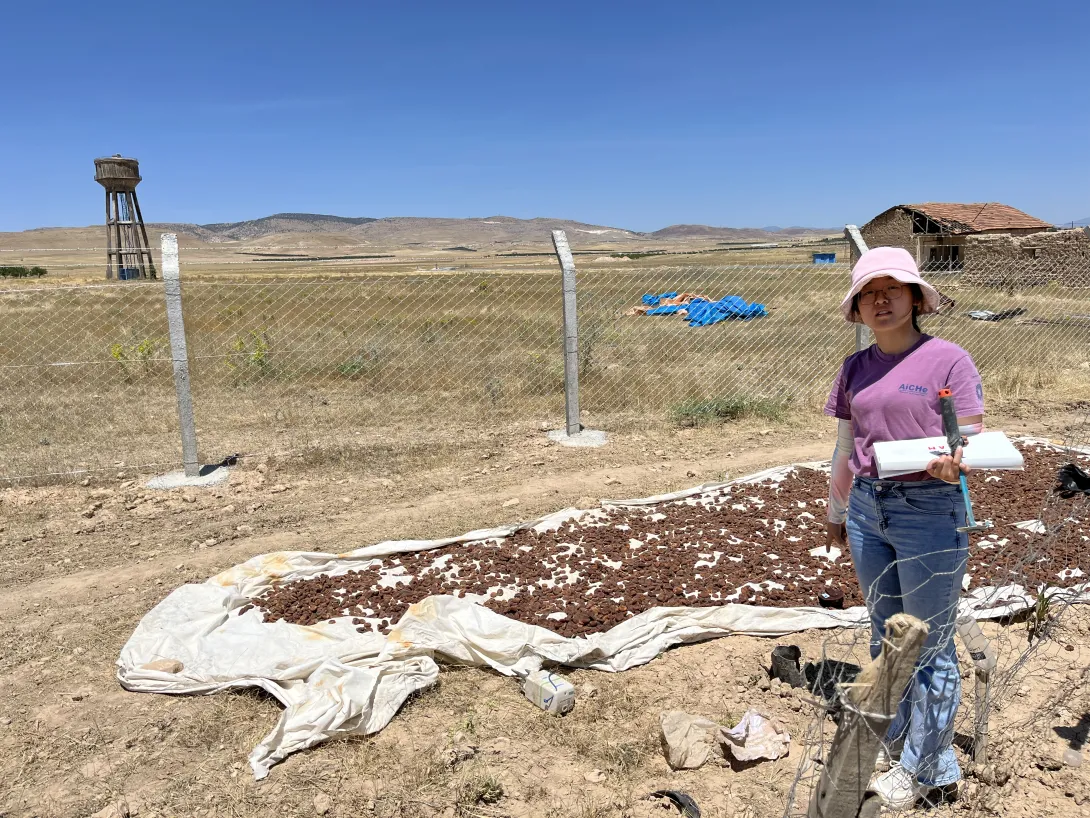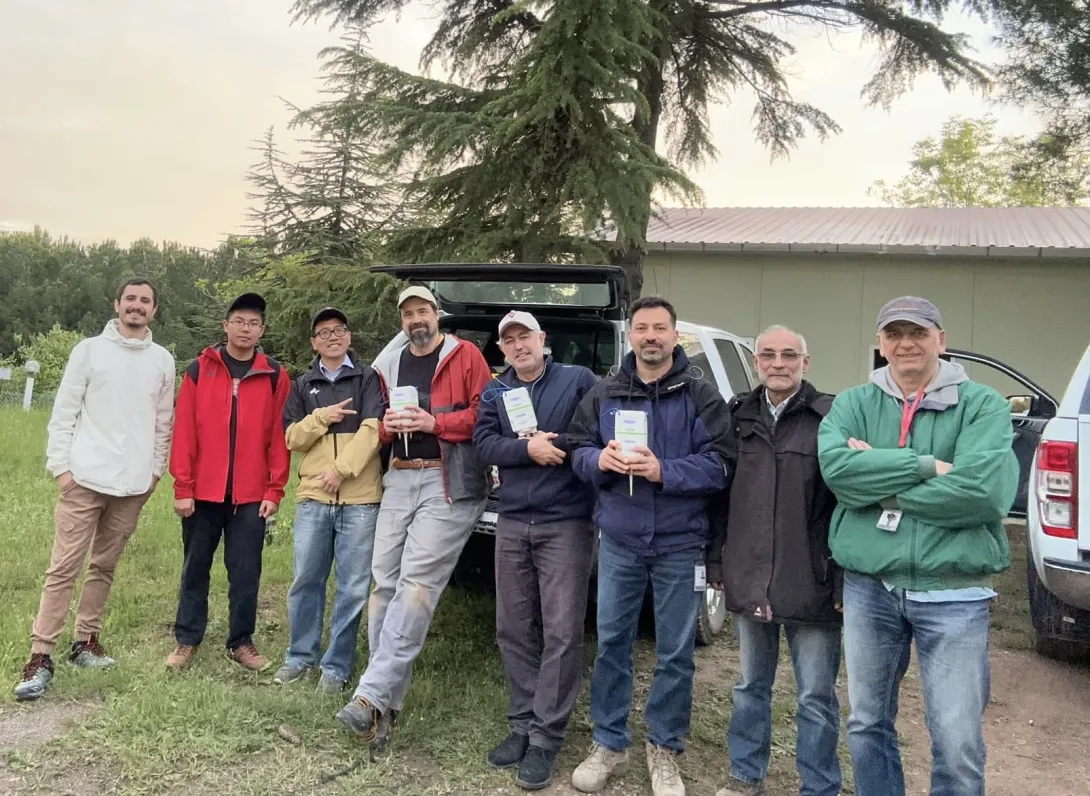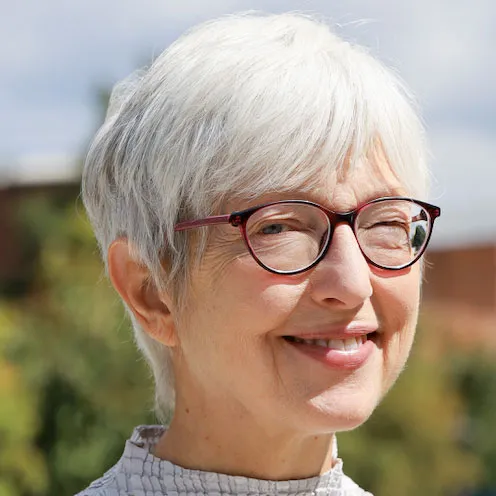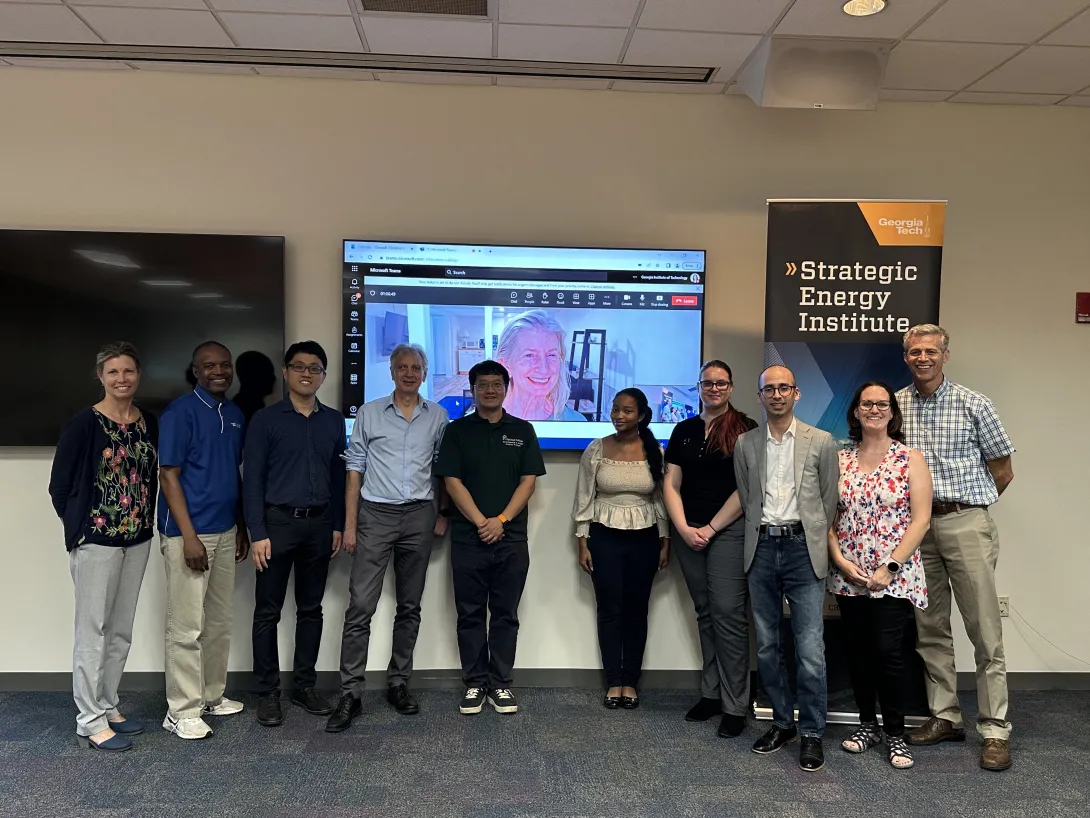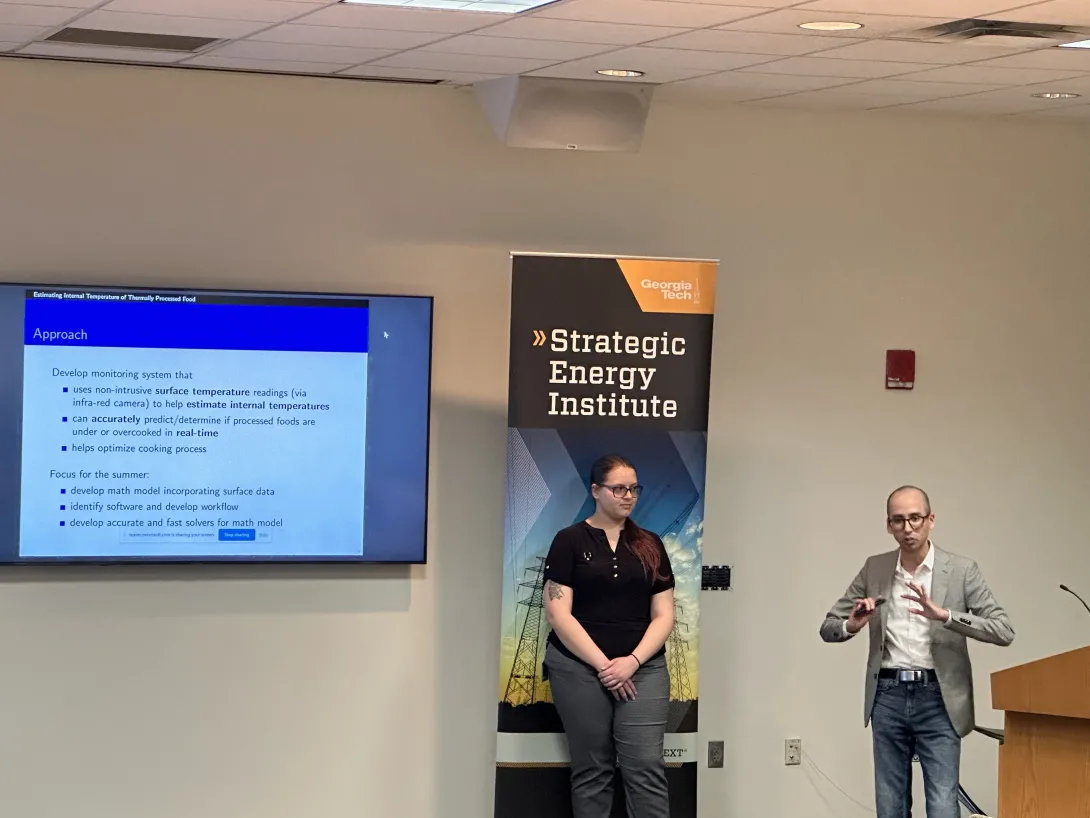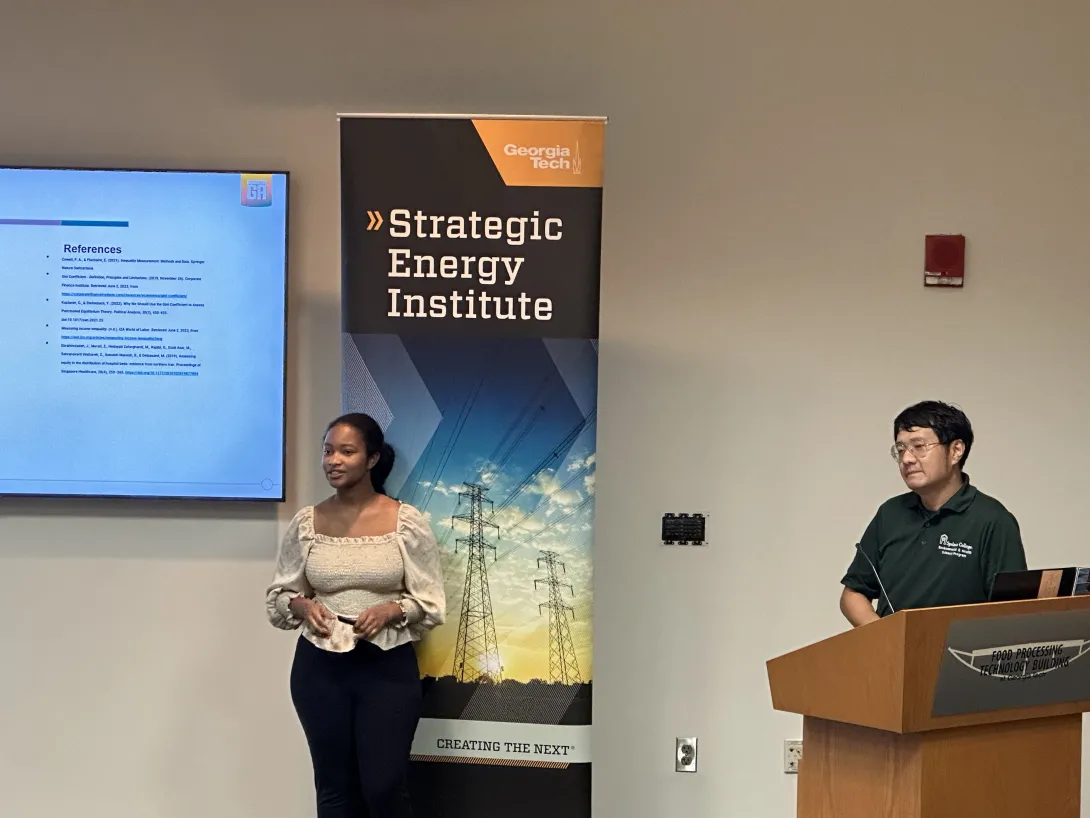Sep. 11, 2023
The water coming out of your faucet is safe to drink, but that doesn’t mean it’s completely clean. Chlorine has long been the standard for water treatment, but it often contains trace levels of disinfection byproducts and unknown contaminants. Georgia Institute of Technology researchers developed the minus approach to handle these harmful byproducts.
Instead of relying on traditional chemical addition (known as the plus approach), the minus approach avoids disinfectants, chemical coagulants, and advanced oxidation processes typical to water treatment processes. It uses a unique mix of filtration methods to remove byproducts and pathogens, enabling water treatment centers to use ultraviolet light and much smaller doses of chemical disinfectants to minimize future bacterial growth down the distribution system.
“The minus approach is a groundbreaking philosophical concept in water treatment,” said Yongsheng Chen, the Bonnie W. and Charles W. Moorman IV Professor in the School of Civil and Environmental Engineering. “Its primary objective is to achieve these outcomes while minimizing the reliance on chemical treatments, which can give rise to various issues in the main water treatment stream.”
Chen and his student Elliot Reid, the primary author, presented the minus approach in the paper, “The Minus Approach Can Redefine the Standard of Practice of Drinking Water Treatment,” in The American Chemical Society.
The minus approach physically separates emerging contaminants and disinfection byproducts from the main water treatment process using these already proven processes:
- Bank filtration withdraws water from naturally occurring or constructed banks like rivers or lakes. As the water travels through the layers of soil and gravel, it naturally filters out impurities, suspended particles, and certain microorganisms.
- Biofiltration uses biological processes to treat water by passing it through filter beds made of sand, gravel, or activated carbon that can support the growth of beneficial microorganisms, which in turn can remove contaminants.
- Adsorption occurs when an adsorbent material like activated carbon is used to trap contaminants.
- Membrane filtration uses a semi-permeable membrane to separate particles and impurities from the main treatment process.
The minus approach is intended to engage the water community in designing safer, more sustainable, and more intelligent systems. Because its technologies are already available and proven, the minus approach can be implemented immediately.
It can also integrate with artificial intelligence (AI) to improve filtration’s effectiveness. AI can aid process optimization, predictive maintenance, faulty detection and diagnosis, energy optimization, and decision-support systems. AI models have also been able to reliably predict the origin of different types of pollution in source water, and models have also successfully detected pipeline damage and microbial contamination, allowing for quick and efficient maintenance.
“This innovative philosophy seeks to revolutionize traditional water treatment practices by providing a more sustainable and environmentally friendly solution,” Chen said. “By reducing the reliance on chemical treatments, the minus approach mitigates the potential risks associated with the use of such chemicals, promoting a safer water supply for both human consumption and environmental protection.”
CITATION: Elliot Reid, Thomas Igou, Yangying Zhao, John Crittenden, Ching-Hua Huang, Paul Westerhoff, Bruce Rittmann, Jörg E. Drewes, and Yongsheng Chen
Environmental Science & Technology 2023 57 (18), 7150-7161
DOI: 10.1021/acs.est.2c09389
News Contact
Tess Malone, Senior Research Writer/Editor
tess.malone@gatech.edu
May. 25, 2023
As the nation's power grid undergoes a transformative shift with historic investment in clean energy, Joe Hagerman understands the importance of this moment for the National Electric Energy Testing, Research and Applications Center (NEETRAC). It presents the center with a distinct opportunity to showcase expertise, drive progress, and actively shape the future of the grid.
NEETRAC, a leading research and testing resource for the electric energy industry, housed under the Georgia Tech School of Electrical and Computer Engineering (ECE), has announced the appointment of Hagerman as its director, starting June 1.
“Under the leadership of former Director Rick Hartlein, NEETRAC has established itself as a trusted authority in testing and research for the electric power industry,” said Hagerman. “Thanks to this reputation, we are now poised to take a leading role in the country's de-carbonization and re-electrification priorities. The potential for strengthening our ties with the Institute, the state of Georgia, and federal entities is a once in a lifetime opportunity.”
Hagerman joins NEETRAC after directing the Energy, Policy, and Innovation Center (EPICenter), a division of the Strategic Energy Institute.
Prior to Georgia Tech, Hagerman served as a section head at the U.S. Department of Energy’s Oak Ridge National Laboratory. He also has served as the deputy chief scientist of the ;National Rural Electric Cooperative Association and as a senior policy advisory at the U.S. Office of Energy’s Energy Efficiency and Renewable Energy.
“As NEETRAC prepares for the next phase of its journey, Joe's passion, visionary approach, and bridge-building abilities will be indispensable for success,” said Arijit Raychowdhury, professor and Steve W. Chaddick School Chair in ECE. “His policy work and technical expertise in grid systems speak for themselves, especially regarding emerging areas like renewables, connected equipment, and cybersecurity. I’m thrilled to have Joe leading the way.”
The Right Time for Growth
The domestic demand for electricity continues to steadily rise because of the government's ambitious renewable and carbon-free energy objectives, the increased electrification of transportation and heating, and the growing demand for digitally connected devices.
Add this to an aging power grid, and incentives and investments for making the grid stronger and more resilient are at an all-time high for the electric power industry.
Hagerman looks to leverage his governmental research reputation and knowledge of the Georgia Tech landscape to enhance NEETRAC's existing strengths and explore new opportunities. He seeks to establish new connections — both inside and outside of the Institute — for the center, enabling it to effectively drive innovation and address the evolving needs of the industry.
“The power grid stands as a remarkable feat of human engineering, and its sheer physical scale is incredible,” said Hagerman. “Incorporating changes is not as simple as flipping a switch. It requires extensive knowledge and countless hours of rigorous testing. Thankfully, NEETRAC and Georgia Tech possess an abundance of expertise — and a world class staff — that can be harnessed to navigate these challenges successfully.”
An Invaluable Industry Resource
For more than 25 years, NEETRAC — located just south of the Atlanta campus, near the Hartsfield-Jackson Atlanta International Airport — has played a vital role in facilitating collaboration between the electric energy industry and academia.
Everything connected to the power grid — even power poles to bucket trucks — can be tested and researched at the center. NEETRAC’s experienced engineers and technicians seek to deliver innovative, effective solutions to all problems related to the transmission and distribution of electric energy.
As a membership-supported center, NEETRAC's member companies comprise utilities that represent around 65% of U.S. electric customers, along with manufacturers who contribute significantly to the products and services offered in the electric utility industry.
“NEETRAC is much more than a testing laboratory to us,” said Sherif Kamel, vice president of New Product Development at Southwire, a NEETRAC member organization. “The deep knowledge and expertise that NEETRAC uses to support our industry’s needs is unparalleled.”
This diverse membership base promotes collaboration and knowledge exchange, keeping NEETRAC at the forefront of industry challenges, advancements, and opportunities.
Sherif, NEETRAC's advisory board chair and a member of the search committee that recommended Hagerman, stated that NEETRAC's staff and facilities aid Southwire in developing, improving, and supporting customers. Additionally, the center enhances the credibility and proficiency of the company's test results. Southwire was founded in 1937 by Roy Richards, a graduate of Georgia Tech, and is a NEETRAC founding member.
Future Potential
Hagerman stressed that with so much uncertainty regarding the future of the domestic power grid, one thing is clear: To evolve NEETRAC will need to enhance its relationship with the industry and scale to help its current and future members throughout North America.
“There’s excitement in not knowing how everything will unfold,” he said. “It’s important for us to be nimble and ready to adapt, but to also use our position to anticipate the needs of our members and provide value and insights to our partners.”
According to Hagerman, the future services of NEETRAC could be driven by several important factors, namely the integration of renewable energy sources, ensuring the security of the grid both in physical and cyber aspects, and harnessing the power of big data.
Investing and expanding in the expertise of NEETRAC's skilled scientists and engineers, its technical staff, and its administrative staff is arguably the most crucial approach to meeting the uncertain demands of the future.
“By nurturing the talents and skills of the team and by incorporating an inclusive approach, we all work toward the shared future of NEETRAC and the Institute. We are all one Georgia Tech,” said Hagerman. “NEETRAC’s role in that future is defined by its cutting-edge evaluations, its world class research, and its continued support of innovation for a resilient and secure domestic power grid for all.”
News Contact
Dan Watson
Aug. 31, 2023
Yuanzhi Tang has received a National Science Foundation grant to see if areas along the middle and coastal plains of Georgia that produce a highly sought-after clay are also home to large amounts of rare earth elements (REEs) needed for a wide range of industries, including rapidly evolving clean energy efforts.
Tang is an associate professor in the School of Earth and Atmospheric Sciences at Georgia Tech. She is joined by Crawford Elliott, associate professor at Georgia State University, on their proposal, “The occurrences of the rare earth elements in highly weathered sedimentary rocks, Georgia kaolins,” funded by the NSF Division of Earth Sciences.
All about REEs
REEs such as cerium, terbium, neodymium, and yttrium, are critical minerals used in many industrial technology components such as semiconductors, permanent magnets, and rechargeable batteries (smart phones, computers), phosphors (flat screen TVs, light-emitting diodes), and catalysts (fuel combustion, auto emissions controls, water purification). They impact a wide range of industries such as health care, transportation, power generation (including wind turbines), petroleum refining, and consumer electronics.
“With the increasing global demand for green and sustainable technologies, REE demand is projected to increase rapidly in the U.S. and globally,” Tang says. “Yet currently the domestic REE production is very low, and the U.S. relies heavily on imports. The combination of growing demand and high dependence on international supplies has prompted the U.S. to explore new resources and develop environmentally friendly extraction and processing technologies.”
Georgia geology
Kaolin is a white, aluminosilicate clay mineral used in making paper, plastics, rubber, paints, and many other products. More than $1 billion worth of kaolin is mined from Georgia’s kaolin deposits every year, more than any other state.
Tang and Elliott say considerable amounts of the REEs have been found in the waste residues generated from Georgia kaolin mining.
“These occurrences have high REE contents and might add significantly to domestic resources,” Tang says. “By understanding the geological and geochemical processes controlling the occurrence and distribution of REEs in these weathered environments, we might be able to provide fundamental information for the identification of REE resources, and the design of efficient and green extraction technologies.”
“The new work with Dr. Tang has the potential to advance our fundamental understanding of the occurrences, mineralogical speciation, and distribution of the REEs in bauxite and kaolin ore,” Elliott says. “I am thrilled to be working with Dr. Tang on this project.”
Laterite thinking
The Department of Energy notes the 17 rare earth elements are found in highly weathered environments, such as the laterites, a type of soil and rock located in eastern and southeastern China, which currently comprises around 80 percent of the world’s REE reserves. To promote domestic production of REEs, the NSF sought proposals to explore natural unconventional element resources located in highly weathered sedimentary/regolith (loose rocky material covering bedrock) settings in the U.S. Georgia’s kaolin deposits and mines extend in the state from southwest to northeast, paralleling the state’s ‘fall line’ that separates the Piedmont Plateau from the coastal plains.
With the NSF grant, Tang and Elliott will find out more about the geochemical factors and processes controlling REE mobility, distribution, and fractionation (enrichment of light REE versus heavy REE) in these environments, which can provide the foundation to identify domestic resources, and for the rational design of extraction technologies.
Community connections
The proposed work will also integrate research with education, combining student training with undergraduate education and research, as well as K-12 and community outreach emphasizing the participation of underrepresented groups in geological sciences.
The grant relates to Tang’s work at two Georgia Tech interdisciplinary research institutes dedicated to sustainability, energy, and climate: the Strategic Energy Institute and the Brook Byers Institute for Sustainable Systems (BBISS), where she is a co-lead with Hailong Chen, an associate professor in the School of Materials Science and Engineering. Tang and Chen’s BBISS project is “Sustainable Resources for Clean Energy.” Tang also serves as an SEI/BBISS initiative lead on sustainable resources.
“The state of Georgia has already been experiencing rapid and exciting developments in the clean energy industry,” Tang says. “We hope to bridge an important link in this space. We hope to help identify and explore regional critical resources for clean energy development by both understanding the geological/geochemical fundamentals, and developing sustainable extraction technologies.”
Georgia Tech is also investing in the community outreach and social aspects of energy research, not just in science and engineering, Tang adds. “Collaboration with Georgia State University also gives exciting opportunities for the engagement with underrepresented student groups, especially in geological sciences, which will serve in the long term for workforce development.”
News Contact
Writer: Renay San Miguel
Communications Officer II/Science Writer
College of Sciences
404-894-5209
Editor: Jess Hunt-Ralston
Aug. 30, 2023
Twenty years ago, when strangers would ask Hermann Fritz about his job and he told them he was a tsunami expert, he got plenty of quizzical looks in response.
“The 2004 Indian Ocean earthquake changed everything,” said Fritz, a young researcher whose Ph.D. was barely two years old at the time, recalling the powerful undersea megathrust off the Indonesian coast that caused the ocean floor to rise on Boxing Day. It triggered a massive, deadly tsunami with 100-foot waves that killed nearly 230,000 people in 14 countries, the last of them 5,000 miles from the earthquake epicenter.
“Overnight, everyone in the world knew about tsunamis,” said Fritz, now a professor in the School of Civil and Environmental Engineering at Georgia Tech. He worked post-disaster reconnaissance operations in countries devastated by that 2004 tsunami.
In the years since, he has led or participated in at least a dozen other such scientific missions, in the wake of tsunamis, hurricanes, landslides, and earthquakes. His wide-ranging research centers on fluid dynamics in these natural (and human-made) disasters, but also on their mitigation and coastal protection. That’s where his latest research, published in the journal Physics of Fluids, is aimed.
Fritz and his former graduate student, Yibin Liu, are interested in a specific kind of tsunami, those caused by underwater volcanic eruptions and landslides. So, they built a volcanic tsunami generator in a wave basin — essentially, a large lab-in-a-tank for studying wave behavior, the O.H. Hinsdale Wave Research Laboratory, a National Science Foundation-supported Natural Hazards Engineering Research Infrastructure facility at Oregon State University.
“The recent underwater volcanic eruptions of 2018 at Anak Krakatau and the 2022 Tonga event caused tsunami hazards with extensive casualties and economic impacts,” Liu said. “That’s what motivated this project — the limited scientific understanding and field data of tsunami generation mechanisms.”
Making Waves
The tsunami generation process is the transfer of mechanical and thermal energy from volcanic activities into the surrounding body of water. To mimic this behavior for their observation, the researchers built a pneumatic volcanic tsunami generator (VTG). Tsunami waves are generated by sending a vertical column of water up through the water surface. Then the water surface deformation was measured with cameras and wave gauges.
“This design, with multiple pneumatic cylinders, can reach a wide spectrum of motion patterns to simulate various types of underwater volcanic eruptions,” said Liu.
The VTG, which they installed on the basin floor at Oregon State, is essentially the next generation of technology they’d used in previous studies.
“We had studied tsunamis from non-tectonic sources, such as submarine landslides, for decades, and we had previously used pneumatics to drive gravel landslides and were familiar with the pneumatic controls and rapid accelerations,” Fritz said. “Ultimately it came down to developing a volcanic tsunami generator that would allow for safe, controlled, and reproducible experiments of an isolated volcanic tsunami generation mechanism.”
They conducted more than 300 experiments on the simulator, recreating different volcanic conditions. The 3D data they gathered will ideally lead to better tsunami models for future events, which can be very unpredictable. The Anak Krakatau event in 2018 is a great example.
“It had basically been announcing a potential tsunami hazard by erupting for six months before collapsing and triggering a tsunami that still took more than 400 lives,” Fritz said.
He added, “The beauty of physical modeling is that it allows us to safely study details of volcanic tsunami generation at reduced scale and fill gaps in rare, real-world observations of volcanic tsunamis. Ultimately, the broader impacts of this research are to raise tsunami awareness, educate, and contribute to saving lives.”
Video: Volcanic Tsunami Generator at work
Citation: Hermann Fritz and Yibin Liu, “Physical modeling of spikes during the volcanic tsunami generation,” Physics of Fluids. doi.org/10.1063/5.0147970
News Contact
Aug. 28, 2023
Researchers from Georgia Tech's School of Civil and Environmental Engineering received a $2.1 million grant from the U.S. Environmental Protection Agency (EPA) to investigate contaminants in drinking water.
The EPA is funding the research on the occurrence and concentration of pathogens and disinfection by-products and the environmental conditions favorable to their growth in drinking water distribution systems.
Carlton S. Wilder Associate Professor Ameet Pinto, the project's principal investigator, said disinfection is used to kill microorganisms to make drinking water safe for consumption. Yet, disinfecting to kill microorganisms can also result in formation of harmful disinfection by-products.
“Our key project goal is to shine a light on when, where, and why pathogens and disinfection by-products occur and co-occur in drinking water systems across the country,” Pinto said. “This will help water utilities better navigate the tradeoff of managing microbiological and chemical risks in drinking water and thus enhance the reliability of safe drinking water supply to their consumers.”
According to the EPA, opportunistic pathogens such as Legionella pneumophila, nontuberculous mycobacteria, and Pseudomonas aeruginosa can grow in drinking water systems and pose potential risks to public health. The occurrence of these and other microbial pathogens is also associated with contaminated storage facilities and other problems in water distribution systems such as backflow and low-pressure incidents.
If left untreated, these contamination events can lead to outbreaks of gastrointestinal, respiratory, and other waterborne illnesses. The disinfectants used to control these pathogens can cause additional problems by reacting with natural organic matter, bromide, and other contaminants to form disinfectant by-products, which also have the potential to be harmful to human health.
Georgia Tech is one of four institutions selected by the EPA to receive nearly $8.5 million in grant funding, along with the University of Minnesota, Michigan State University, and the University of Texas. The Georgia Tech team includes Turnipseed Family Chair & Professor Ching-Hua Huang and Assistant Professor Katy Graham.
News Contact
Melissa Fralick | melissa.fralick@ce.gatech.edu
Aug. 22, 2023
The Georgia Tech Strategic Energy Institute (SEI) hosted the third annual Energy Storage Grand Challenge Summit this summer. The three-day event was sponsored by the Department of Energy’s (DOE) Office of Electricity and organized by the Oak Ridge National Laboratory (ORNL). The summit engaged a diverse set of energy storage stakeholders to discuss how the DOE continues to formulate strategies and pathways to accelerate energy storage innovation and deployment over the next decade and beyond.
In his keynote address, Gene Rodrigues, assistant secretary for Electricity at the DOE, shared the agency’s strategic priorities and invited stakeholders and participants to own the challenge together by focusing on partnerships and practical, cost-effective solutions for energy storage. The event consisted of tours of the local “living labs,” including the Georgia Power microgrid in midtown Atlanta and the Georgia Power Smart Neighborhood, presentations from DOE’s national labs, and panel discussions with industry experts. Discussion topics included the science underpinning energy storage, storage innovation deep dives, accelerating long-duration energy storage with public-private partnerships, and more. The event was attended by more than 200 people.
With the expansion of battery and electric vehicle manufacturers in Georgia and neighboring states, Georgia Tech is playing an integral role in developing the technologies that enable equitable, lower-cost, and cleaner generation, storage, distribution, and utilization of energy. By hosting events like this, SEI continues to strengthen partnerships with industry, national labs, government decision makers, and local communities.
“Georgia Tech has longstanding expertise in energy storage research and commercialization, with researchers working across the battery value chain from solid state batteries to new battery chemistries, polymer electrolytes, flow batteries, and much more,” said Tim Lieuwen, executive director of SEI, Regents’ Professor, and David S. Lewis Jr. Chair in the Daniel Guggenheim School of Aerospace Engineering. “This is substantiated with the formation of the Georgia Tech Advanced Battery Center at Georgia Tech this fall.”
The newly formed Center acts as the focal point at Georgia Tech to enhance interactions between industry, researchers, and students in the area of energy storage. It is led by co-directors Matthew McDowell, professor, Woodruff Faculty Fellow, and initiative lead for energy storage at SEI and Georgia Tech's Institute of Materials; and Gleb Yushin, professor in the School of Materials Science and Engineering. A key goal of the Center is to construct a battery manufacturing facility at Georgia Tech that will serve as a research and development and workforce training resource for the region.
“Georgia Tech has a wealth of talent in energy storage R&D, and we are excited to further engage with companies and government to develop and deploy advanced battery technologies,” said McDowell. “We are accelerating our research, education, and training to help achieve massive electrification of our society.”
News Contact
Priya Devarajan | SEI Research Communications Program Manager
Aug. 09, 2023
The IEEE Transactions on Power Electronics (TPEL) First Place Prize Paper Award has been awarded to a team of researchers in the Georgia Tech School of Electrical and Computer Engineering (ECE) led by Professor Deepakraj M. Divan. TPEL is renowned for its influence in the power electronics field.
In addition to Divan, the researchers include:
- Lukas Graber - Associate Professor
- Maryam Saeedifard – Professor
- Rajendra Prasad Kandula – Staff Research Scientist at Oak Ridge National Laboratory (was Chief Engineer at Tech's Center for Distributed Energy)
- Xiangyu Han - Senior Electrical Design Engineer at Tesla (ECE Ph.D. '20)
- Chunmeng Xu - Research Scientist at ABB Raleigh Research Center (ECE Ph.D. '21)
- Liran Zheng - Senior Electrical Design Engineer at Tesla (ECE Ph.D. '22)
The team's prize-winning paper titled, "7.2 kV Three-Port SiC Single-Stage Current-Source Solid-State Transformer With 90 kV Lightning Protection," proposes a new type of power transformer called a multiport modular single-stage current-source solid-state transformer (SST).
Unlike traditional transformers, it operates at high voltage (up to 7.5 kV) and performs direct AC to DC or AC to AC conversion in just one stage. The design includes a buffer port for improved power management and energy storage integration. Innovative insulation and lightning protection measures ensure safety and reliability, while a soft-switching technique reduces electromagnetic interference.
These advanced transformers address the increasing prevalence of renewable energy sources and electric vehicles in power grids, offering enhanced flexibility and control over electricity flow compared to traditional transformers.
The Prize Paper Award distinction is a high honor and a tribute to the fine research quality, presentation, and potential impact that the research has to the field, according to TPEL. The publication’s rigorous selection process requires multiple review levels and votes. Each year, up to five first-place prize papers and ten second-place prize papers are deemed best among those published in the preceding calendar year. In 2022, 1,292 regular papers, letters, and correspondence were published from 3,186 original submissions.
The team will be honored at the TPEL Editorial Board Meeting during the 2023 IEEE Energy Conversion Conference and Expo in Nashville, Tennessee on November 1.
News Contact
Dan Watson
Jul. 28, 2023
In February, a major earthquake event devastated the south-central region of the Republic of Türkiye (Turkey) and northwestern Syria. Two earthquakes, one magnitude 7.8 and one magnitude 7.5, occurred nine hours apart, centered near the heavily populated city of Gaziantep. The total rupture lengths of both events were up to 250 miles. The president of Turkey has called it the “disaster of the century,” and the threat is still not over — aftershocks could still affect the region.
Now, Zhigang Peng, a professor in the School of Earth and Atmospheric Sciences at Georgia Tech and graduate students Phuc Mach and Chang Ding, alongside researchers at the Scientific and Technological Research Institution of Türkiye (TÜBİTAK) and researchers at the University of Missouri, are using small seismic sensors to better understand just how, why, and when these earthquakes are occurring.
Funded by an NSF RAPID grant, the project is unique in that it aims to actively respond to the crisis while it’s still happening. National Science Foundation (NSF) Rapid Response Research (RAPID) grants are used when there is a severe urgency with regard to availability of or access to data, facilities or specialized equipment, including quick-response research on natural or anthropogenic disasters and other similar unanticipated events.
In an effort to better map the aftershocks of the earthquake event — which can occur weeks or months after the main event — the team placed approximately 120 small sensors, called nodes, in the East Anatolian fault region this past May. Their deployment continues through the summer.
It’s the first time sensors like this have been deployed in Turkey, says Peng.
“These sensors are unique in that they can be placed easily and efficiently," he explains. "With internal batteries that can work up to one month when fully charged, they’re buried in the ground and can be deployed within minutes, while most other seismic sensors need solar panels or other power sources and take much longer time and space to deploy.” Each node is about the size of a 2-liter soda bottle, and can measure ground movement in three directions.
“The primary reason we’re deploying these sensors quickly following the two mainshocks is to study the physical mechanisms of how earthquakes trigger each,” Peng adds. Mainshocks are the largest earthquake in a sequence. “We’ll use advanced techniques such as machine learning to detect and locate thousands of small aftershocks recorded by this network. These newly identified events can provide new important clues on how aftershocks evolve in space and time, and what drives foreshocks that occur before large events.”
Unearthing fault mechanisms
The team will also use the detected aftershocks to illuminate active faults where three tectonic plates come together — a region known as the Maraş Triple Junction. “We plan to use the aftershock locations and the seismic waves from recorded events to image subsurface structures where large damaging earthquakes occur,” says Mach, the Georgia Tech graduate researcher. This will help scientists better understand why sometimes faults ‘creep’ without any large events, while in other cases faults lock and then violently release elastic energy, creating powerful earthquakes.
Getting high-resolution data of the fault structures is another priority. “The fault line ruptured in the first magnitude 7.8 event has a bend in it, where earthquake activity typically terminates, but the earthquake rupture moved through this bend, which is highly unusual,” Peng says. By deploying additional ultra-dense arrays of sensors in their upcoming trip this summer, the team hopes to help researchers ‘see’ the bend under the Earth’s surface, allowing them to better understand how fault properties control earthquake rupture propagation.
The team also aims to learn more about the relationship between the two main shocks that recently rocked Turkey, sometimes called doublet events. Doublet events can happen when the initial earthquake triggers a secondary earthquake by adding extra stress loading. While in this instance, the doublet may have taken place only 9 hours after the initial event, these secondary earthquakes have been known to take place days, months, or even years after the initial one — a famous example being the sequence of earthquakes that spanned 60 years in the North Anatolian fault region in Northern Turkey.
“Clearly the two main shocks in 2023 are related, but it is still not clear how to explain the time delays,” says Peng. The team plans to work with their collaborators at TÜBİTAK to re-analyze seismic and other types of geophysical data right before and after those two main shocks in order to better understand the triggering mechanisms.
“In our most recent trip in southern Türkiye, we saw numerous buildings that were partially damaged during the mainshock, and many people will have to live in temporary shelters for years during the rebuilding process,” Peng adds. “While we cannot stop earthquakes from happening in tectonically active regions, we hope that our seismic deployment and subsequent research on earthquake triggering and fault imaging can improve our ability to predict what will happen next — before and after a big one — and could save countless lives.”
Jul. 07, 2023
Valerie Thomas, Anderson-Interface Chair of Natural Systems and Professor in the H. Milton School of Industrial and Systems Engineering, was recently asked to speak as part of Sustainability Research + Innovation (SRI) Congress 2023. The event was hosted online and at the Panama Convention Center by the National Secretariat of Science, Technology, and Innovation of the Republic of Panama (SENACYT) and the Inter-American Institute for Global Change Research (IAI).
Sustainability Research + Innovation Congress 2023 is the world's largest gathering for the global sustainability community, and for the first time, the event took place in the Latin American and Caribbean Region. SRI unites more than 2000 global sustainability research leaders, government and civil society experts, funders and innovators to inspire action and promote a sustainability transformation. The global and annual event elevates diverse knowledge on sustainability, provides an inspiring platform to share innovative ideas, and creates an inclusive space for collaboration and action. SRI is a joint initiative of Future Earth and the Belmont Forum.
As part of the Fri Jun 30 panel session "Reducing Emissions from Logistics", Thomas discussed "Life-cycle Approaches to Assessing Emissions from Logistics." To help provide the academic perspective, she was joined by Marilyn Brown, Regents' and Brook Byers Professor of Sustainable Systems in the School of Public Policy, who spoke on "Three trends challenging U.S. and global emissions reductions from logistics." The private sector perspective was provided by Alex Rodriguez, Regional Head of Energy Transition Execution - LAM with A.P. Moller - Maersk. Rodriquez provided a broad and interesting discussion of air-water-land logistics, its impact on the environment, and possible future solutions. The session was organized by Jorge Barnett Lawton, Managing Director of the Georgia Tech Panama Logistics Innovation & Research Center, who also moderated the session from Panama City.
To learn more about the annual event and view available recordings, please visit https://sricongress.org/.
Jul. 25, 2023
This summer, the Strategic Energy Institute’s Energy Faculty Fellow program (EFF) brought three faculty and two undergraduate students to the Georgia Tech campus. The 10-week program has been designed for Georgia Tech faculty to host a faculty member from a primarily undergraduate or minority serving Institution to engage with energy leaders, build networks, and pursue research collaborations in the energy space. Ongoing goals are to continue research collaborations well beyond this summer, with faculty and students carrying research efforts to their home institutions and into the new academic year. The Strategic Energy Institute anticipates a pipeline between the institutions, where the EFF participants encourage their colleagues to engage with Georgia Tech in future cohorts, call on each other for collaborations on federal grant proposals, and the faculty to send students to the summer undergraduate or graduate programs at Georgia Tech.
The 2023 Summer program included
- Mario Bencomo (Cal State Fresno, HSI), hosted by Comas Haynes (student - Mikayla Leggett)
- Guanyu Huang (Spelman, HBCU), hosted by Marilyn Brown (student - Nia McKenzie)
- Xingpeng Li (U Houston, HSI), hosted by Pascal Van Henternryck
The program concluded with a closeout reception where the attendees presented their research work from the past 10 weeks that they spent on the Georgia Tech campus and confirmed their key takeaway as to grow and nurture the research collaborations they have built this summer. Please scroll down to read about each of their experiences at Georgia Tech.
Mario Bencomo, Fresno State
Hosted by: Comas Haynes, Principal Research Engineer at Georgia Tech Research Institute, Hydrogen Initiative Lead at SEI
Mario Bencomo is an assistant professor in Mathematics at Fresno State and was hosted by Comas Haynes, Principal Research Engineer and Research Faculty in the Intelligent Sustainable Technologies Division at GTRI and the lead for Hydrogen initiative at the Strategic Energy Institute.
Mario's Energy Faculty Fellow experience in his own words:
"Overall this summer experience has been very productive. Personally, this program has given me the space and resources to engage in research, which is a challenge coming from a teaching intensive institution. Though I am familiar with the fundamental mathematics of the problem, the application is new to me and an opportunity to grow my research portfolio. To that end, collaborating with Comas and his team has been instrumental in the earlier stages of problem formulation.
Work done over this summer has provided the groundwork for a research program I plan on carrying out at Fresno State. In particular, we have developed baseline code that will serve as the foundation for developing more sophisticated models as well as a framework for a monitoring system. It is my plan to continue collaborating with Comas and his team as I continue this work, while engaging students from my institution in research."
Student: Mikayla Leggett
Mikayla is an undergraduate student at Fresno State and worked with Mario in the program. Mikayla mentioned the below about her experience at Georgia Tech:
"The SURE program has been an amazing opportunity to see how research is conducted and to experience a new place. During my time here I’ve learned about mathematical methods I was unfamiliar with and how to implement them. Additionally, it’s been fascinating to see how research is done, and the collaborative process between experts in different disciplines, like Dr. Haynes. I am excited to continue working on this project with Dr. Bencomo even after this program ends. I’ve also greatly appreciated the chance to see Georgia Tech and Atlanta and everything they have to offer. I was fortunate enough to be assigned fantastic roommates who I’ve really enjoyed getting to know. They’re definitely friends, and I hope we can keep in touch after the program ends. Experiencing the city and the culture has also been a highlight of my experience."
Guanyu Huang
Hosted by: Marilyn Brown, a Regents' and Brook Byers Professor of Sustainable Systems in the School of Public Policy, Georgia Tech
Guanyu Huang is an assistant professor in Environmental and Health Science at Spelman College. Read below to know what Guanyu Huang had to say about his experience at Georgia Tech.
"I had an excellent experience at Georgia Tech, and I really enjoyed working with Dr. Brown and the Strategic Energy Institute colleagues. We are working on a paper and will continue our collaboration after my fellowship. My key takeaway from this fellowship is the great opportunity to work closely with Georgia Tech Principal Investigators and form new collaborations between Spelman and Georgia Tech that we plan to continue in the future."
Student: Nia Devonne McKenzie
Nia is a sophomore at Spelman College majoring in Environmental Science, with a passion for sustainable policies, research, and service.
“The program was an enlightening experience that significantly contributed to my research and analysis skills. I have had the fantastic opportunity of working with graduate students to find innovative solutions to climate problems. The Climate Energy Policy Lab has been a joy to work with. I truly am grateful for my time at Georgia Tech with the Strategic Energy Institute.”
Xingpeng Li (University of Houston)
Hosted by: Professor Pascal Van Henternryck, School of Industrial & Systems Engineering, Georgia Tech
Xingpeng Li is an assistant professor in the College of Electrical and Computer Engineering at the University of Houston. He was hosted by Pascal Van Henternryck, a A. Russell Chandler III Chair and Professor in the H. Milton Stewart School of Industrial and Systems Engineering at Georgia Tech. Xingpeng Li shares his experience and takeaways from the Faculty Fellow program below:
My overall experience at Georgia Tech:
“It’s really an amazing experience to visit Georgia Tech for this summer. I not only got to know the city and the university here and had a lot of fun, but also gained unique experience interacting with talented students, post-docs and senior researchers, and faculties at Georgia Tech.”
Collaborations with Professor Pascal Van Hentenryck and his team during the past 10 weeks:
“In addition to several individual meetings with Professor Pascal Van Hentenryck, I attended roughly two of their meetings each week: one research group meeting and one machine learning (ML) methodology reading meeting. I got to know the cutting-edge research Professor Pascal Van Hentenryck’s team does through the research group meetings and got the opportunity to learn emerging ML technologies through the ML methodology reading meetings. I also shared my University of Houston team’s research and experience such as power system dynamics and stability-constrained energy scheduling that well complement to the current research of Professor Pascal Van Hentenryck’s team, which makes it suitable for establishing collaborations. I also shared my personal experience as a junior faculty with some Ph.D. students and post-docs here, which may help encourage them to look for academia jobs after graduation.”
Key takeaways from this program and work products:
“Get to know how a large research team is managed efficiently and effectively (by learning from my host at AI4OPT). Get to learn innovative ML approaches that may be very useful to support my own team’s research work. Complementary expertise with my host’s team makes it possible to establish and maintain long-term collaborations. Got to know many exciting energy-related initiatives by Georgia Tech Strategic Energy Institute. Got to know and interact with a number of energy-related professors, researchers and engineers. Created a concept paper that could be potentially extended to a full proposal for future grant applications with my host.”
Final comments:
“There is a weekly informal social event at Pascal Van Hentenryck’s team, which provides good interactive opportunities for people in his team (a very large and strong research team). During such informal ‘meetings’, I really enjoyed the interactions with other team members. Having a short enjoyable break can relieve pressure while working hard on daily research work.”
News Contact
Priya Devarajan || SEI Communications Program Manager
Pagination
- Previous page
- 16 Page 16
- Next page

